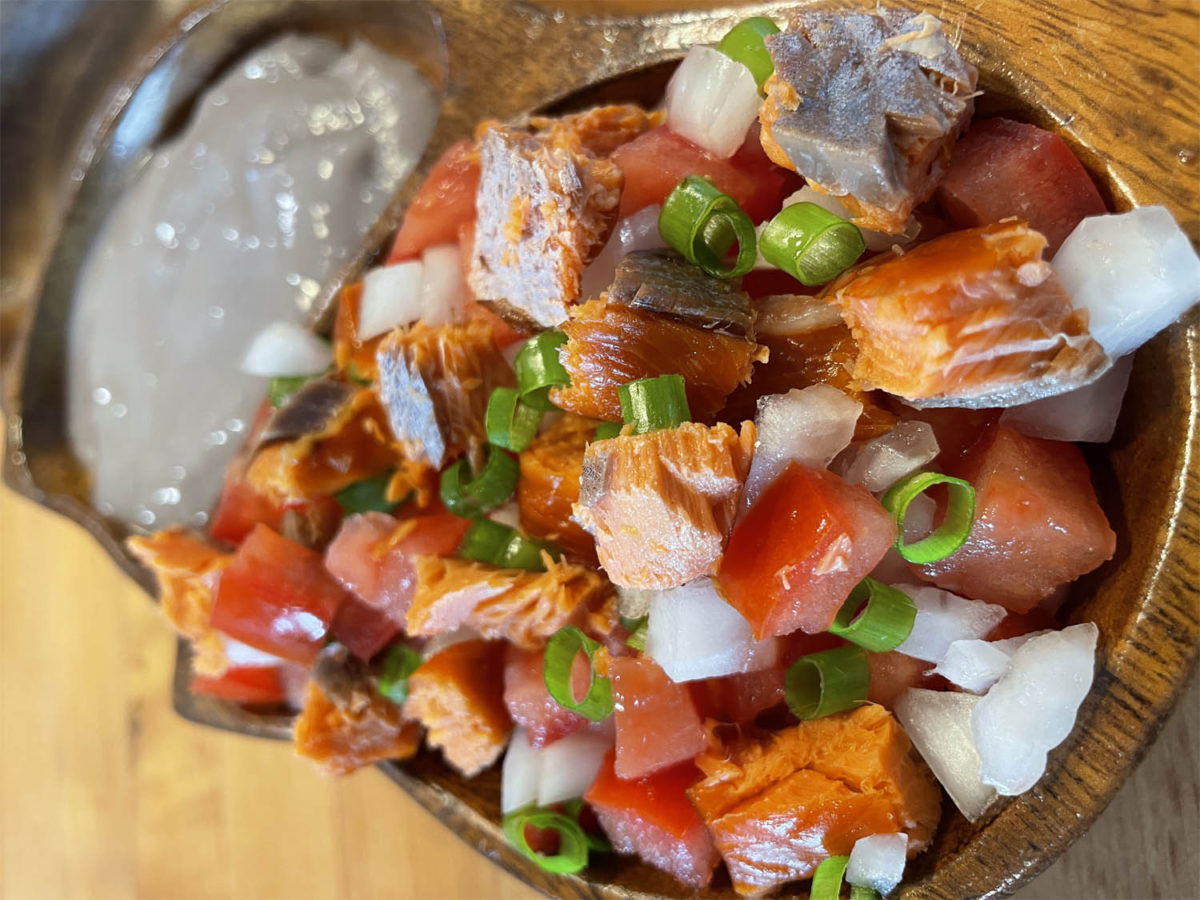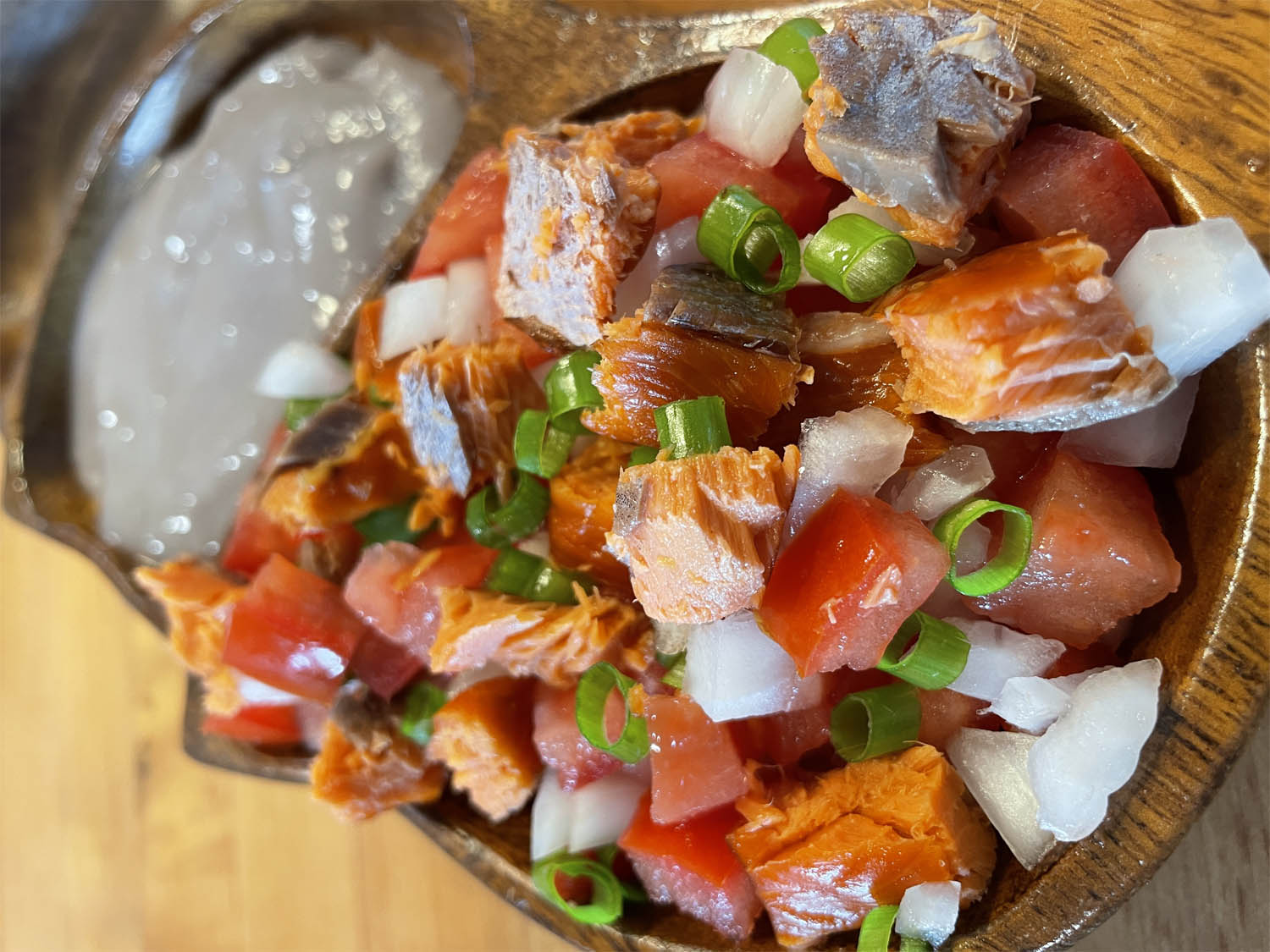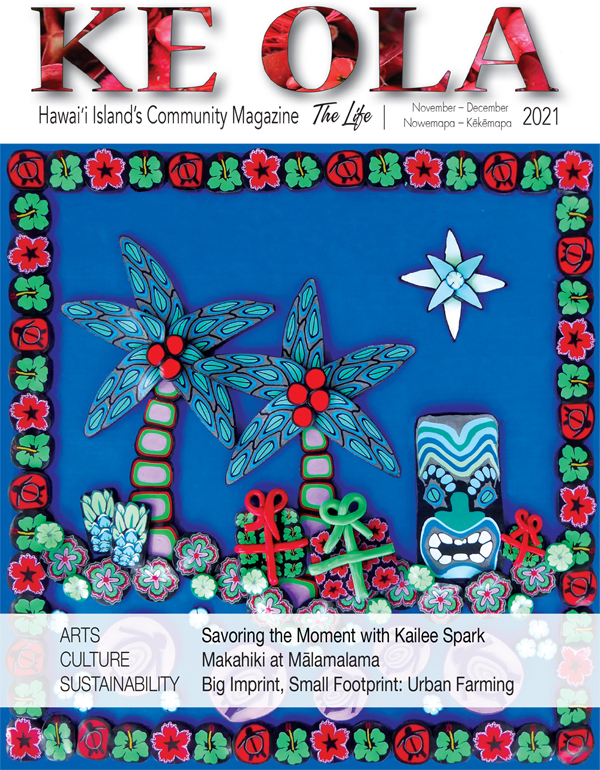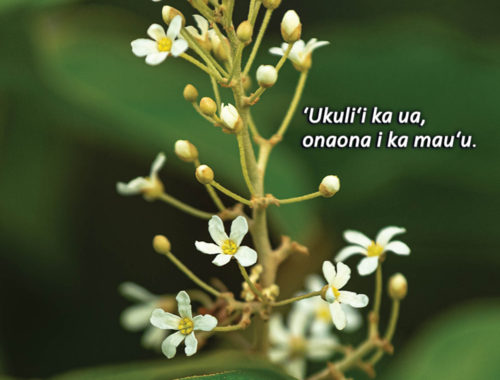
Local Foods: Family Traditions, and a Recipe for Lomilomi Salmon

By Brittany P. Anderson
A holiday wouldn’t be complete without at least one night filled with traditional lū‘au foods. Family favorites are slightly sour fermented poi, slow-roasted kālua pua‘a (pig), squid lū‘au, and lomilomi salmon. Each dish is served in a wooden bowl passed down for generations, on a bed of banana leaves that dress the table.
Lomilomi salmon, while a meal staple, can seem odd compared to the other Hawaiian lū‘au dishes. Neither salmon nor tomatoes are endemic to Hawai‘i, yet the combination of the two play a significant role in the culture. The precise origin of lomilomi salmon isn’t known, but we can explore the history of when the recipe might have become popular.
In the early 1800s, Hawaiians were recruited to join fur traders in the Pacific Northwest. According to some historians, they joined the fur trade to escape tribal violence. Yet, some historians cite the superior navigation and swimming skills that made Hawaiians an asset to traders. One story mentions that Scottish traders insisted a Hawaiian be on their boat while hunting for beavers to rescue men who may fall overboard. In whatever capacity, it is clear Hawaiians were esteemed members of the operation.
A significant trader, Hudson’s Bay Company (HBC) recruited Hawaiians to work as guides, carpenters, interpreters, navigators, blacksmiths, and tradesmen. HBC had more than 500 Hawaiians in Vancouver, Washington, and the many outposts throughout the area. Some men would come back during the winters, bringing home salmon filets stored in barrels of salt, known as butts. Others would stay living amongst the Native Americans, especially the Nisqually tribe, and settlers in the area. Today, their ancestors live in communities along the Washington, Oregon, and British Columbia coasts. You can also find several locations in Washington state named after Hawaiians like Kanaka Bay in the San Juan Islands, and the city of Kalama.
Sugar, molasses, coffee, and salt were island products commonly sent as provisions to the HBC outposts. At the time, the Moanalua salt lake on O‘ahu was prized for having high quality salt for preserving goods and ultimately used to salt the salmon for Hawai‘i consumption.
In 1830, HBC preserved salmon primarily for company workers, and they also exported 200–300 barrels to Hawai‘i. By the mid-1840s, more than a thousand barrels of salted salmon were shipped to the islands.
There are no written records of the first lomilomi salmon recipe; however, we can imagine, with the barrels of salted salmon arriving in the islands, that it might have been sometime in the 1840s. Whenever it was, lomilomi salmon became a staple side dish at gatherings and family dinners.
Passing great-great-grandfather’s koa bowl filled with lomilomi salmon, swiping poi from grandaddy’s dish, and heaping kālua pork from our bowl—we have all the generations present around the table. We may never find the true origin of lomilomi salmon, but its place in the meal is firmly rooted in our family tradition.
This recipe for lomilomi salmon uses smoked Alaskan sockeye instead of more traditional salted salmon. Sockeye was Hawaiians’ preferred salmon imported by Hudson’s Bay Company in the 1840s. You can salt cure your own salmon or opt for a smokey, more modern style. Either way, I hope this recipe becomes a family favorite if it isn’t already.
Ingredients
Whole tomatoes, 3
Green onions, 1/2 bunch
Sweet Maui onions, 1
Diced smoked salmon, 8 oz. to 1 lb.
Hawaiian sea salt
Method
Wash tomatoes, then dice and place in a nonreactive medium-sized bowl. Remove the outer layer of a sweet onion, then dice and place in bowl with the tomatoes. Wash green onions and thinly slice the green tops. Add to mixture as well. Depending on taste you can use more or less smoked salmon. Dice the salmon and add to the tomato mixture. Sprinkle with a pinch of Hawaiian sea salt and mix well. Cover and store in the refrigerator. The dish is best made in advance and served either after several hours or a day later. Enjoy!



